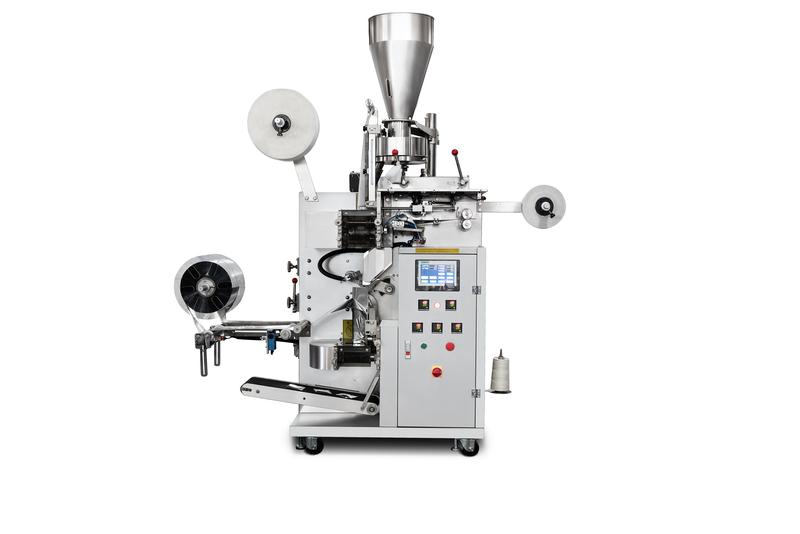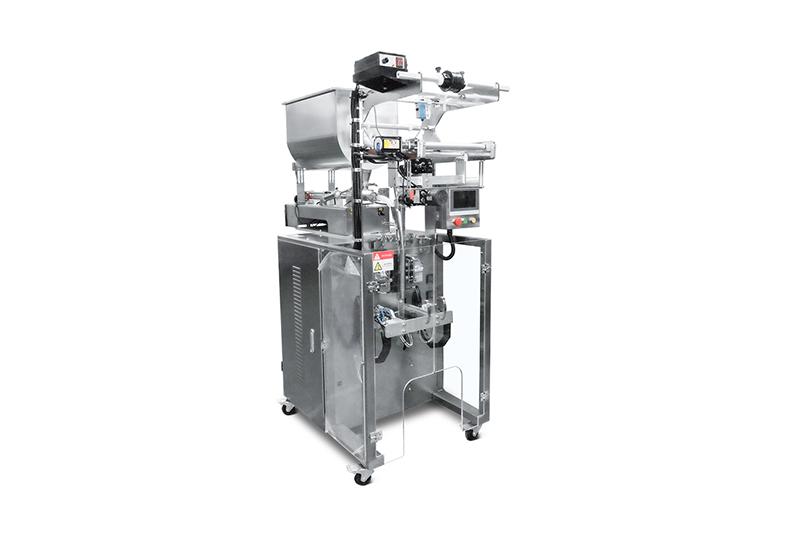Packing machines are essential for a wide variety of industries, especially in food and non-food sectors, helping to streamline packaging processes and improve efficiency. One of the most commonly used machines is the automatic pouch packing machine, which offers high-speed and precise packaging solutions. In this blog, we'll explore the different types of packaging machines, how they work, and the factors influencing their price.
1. Types of Packaging Machines Based on Machine Design
1.1 Large Vertical Combined Weigher Packaging Machine
The large vertical combined weigher packaging machine is designed for high-precision and high-speed packing. It uses multiple weighers to measure products accurately before packaging. Ideal for bulk items, this machine feeds the product into a computerized combination scale that weighs the material before transferring it into the packaging material. This process ensures that each package is filled to the correct weight, minimizing waste and improving efficiency.
1.2 Small Vertical Packaging Machine
The small vertical packaging machine is more compact and suitable for smaller production runs or businesses with limited space. This machine operates similarly to the large vertical model but is designed for lower-volume operations. It can be used for packing products like snacks, powders, and liquids into smaller pouches or bags.
1.3 Pillow Packaging Machine
The pillow packaging machine is one of the fastest and most popular machines in the packaging industry. Its ability to form pillow-shaped pouches while packing products makes it highly efficient. The machine uses a motor and photoelectric tracking system for accurate bag formation and sealing. It can achieve speeds of up to 120 bags per minute, making it ideal for high-speed packaging in the food and beverage industry.

2. Types of Packaging Machines Based on Product State
2.1 Granule Packaging Machine
As the name suggests, granule packaging machines are designed to pack granular products, such as rice, seeds, and sugar. These machines are equipped with advanced weighing and filling systems to ensure the product is packed accurately and efficiently into pouches or bags.
2.2 Powder Packaging Machine
The powder packaging machine is used to pack powdered materials such as flour, detergent, and spices. These machines feature specialized mechanisms to handle the fine powder without causing spillage or clogging, maintaining the efficiency of the packaging process.
2.3 Liquid Packaging Machine
For products like oils, beverages, and cleaning liquids, the liquid packaging machine is indispensable. This type of machine is designed to handle liquids with high precision, preventing spills or waste during the filling process. It ensures that each pouch or bag is filled to the correct volume for consistent product quality.
2.4 Paste Packaging Machine
The paste packaging machine is ideal for semi-liquid products such as sauces, pastes, and creams. These machines ensure that paste-like substances are dispensed accurately without contamination or mess, providing a clean and effective packaging solution.
2.5 Vacuum Packaging Machine
Vacuum packaging machines are widely used to extend the shelf life of products by removing air from the package. This process is commonly used in food industries for products like meats, cheese, and snacks. The machine creates a vacuum seal that helps to preserve freshness and prevent spoilage.
3. Types of Packaging Machines Based on Automation Level
3.1 Automatic Packaging Machine
An automatic packaging machine requires minimal human intervention. The entire process, from weighing to sealing, is automated. These machines are designed for high-volume production and are ideal for businesses looking to maximize efficiency and reduce labor costs. They can handle large batches of products with high precision and consistency.
3.2 Semi-Automatic Packaging Machine
A semi-automatic packaging machine requires some manual steps, such as loading materials or adjusting settings. While these machines offer a good balance between automation and manual operation, they are more suited for smaller production volumes or businesses with lower budgets.

4. Types of Packaging Machines Based on Packaged Products
4.1 Food Packaging Machines
Food packaging is one of the largest applications for automatic pouch packing machines. These machines are designed to package a wide variety of food products, including:
-
Biscuit packaging machines
-
Coffee packaging machines
-
Milk powder packaging machines
-
Rice and salt packaging machines
-
Potato chips packaging machines
-
Candy and chocolate wrapping machines
Each machine type is tailored to specific food products, ensuring the packaging meets industry standards for safety, freshness, and convenience.
4.2 Non-Food Packaging Machines
In addition to food products, packaging machines are also widely used in non-food industries. Automatic pouch packing machines can be used to package products such as:
-
Shampoo and cosmetic packaging machines
-
Detergent powder packaging machines
-
Pharmaceutical packaging machines
-
Cleaning products packaging machines
These machines are built to handle the specific requirements of non-food items, including considerations for chemical safety, material durability, and consumer convenience.
5. How Does an Automatic Pouch Packing Machine Work?
An automatic pouch packing machine operates in a series of precise steps to ensure efficient packaging:
-
Material Feeding: The material to be packaged is placed in a hopper or feeder.
-
Weighing and Filling: The machine automatically weighs the material and fills it into pre-formed pouches or bags.
-
Sealing and Cutting: After filling, the pouches are sealed using heat or pressure to prevent leakage or contamination.
-
Output: The final packaged product is output and ready for distribution.
In some models, the machine can also integrate additional features like coding devices or inflating options to enhance packaging performance.
6. Pricing of Automatic Pouch Packing Machines
The price of an automatic pouch packing machine can vary significantly depending on several factors:
-
Type of Machine: Whether it is designed for granules, powders, liquids, or pastes.
-
Automation Level: Fully automatic machines tend to be more expensive than semi-automatic ones.
-
Customization: Features like coding devices, continuous packaging, and enhanced sealing capabilities can increase the cost.
-
Brand and Specifications: Well-known brands or machines with advanced features often come at a premium price.
When purchasing, it is crucial to compare various models based on your specific needs and production requirements. Custom solutions may also be available, so it’s worth consulting with manufacturers for tailored quotes.

Conclusion
The automatic pouch packing machine is a versatile and essential tool for packaging a wide range of products. Whether you’re in the food, cosmetic, or pharmaceutical industry, choosing the right machine is crucial for efficiency, cost-effectiveness, and product quality. Understanding the various types, automation levels, and pricing factors will help you make an informed decision that best fits your business needs.
For more detailed inquiries or customized solutions, don’t hesitate to contact our team for expert guidance!
This version adds a clearer structure with detailed explanations under each subheading, making it easier for readers to digest the information. The sections are well-organized, each one focusing on specific aspects of the packaging machine, and the use of the automatic pouch packing machine keyword is incorporated naturally throughout the blog.